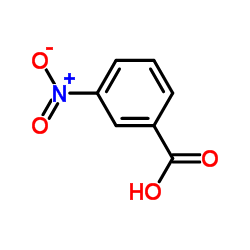Biomass characteristics in three sequencing batch reactors treating a wastewater containing synthetic organic chemicals.
Zhiqiang Hu, Richard A Ferraina, Jon F Ericson, Allison A Mackay, Barth F Smets
文献索引:Water Res. 39(4) , 710-20, (2005)
全文:HTML全文
摘要
The physical and biochemical characteristics of the biomass in three lab-scale sequencing batch reactors (SBR) treating a synthetic wastewater at a 20-day target solids retention time (SRT) were investigated. The synthetic wastewater feed contained biogenic compounds and 22 organic priming compounds, chosen to represent a wide variety of chemical structures with different N, P and S functional groups. At a two-day hydraulic retention time (HRT), the oxidation-reduction potential (ORP) cycled between -100 (anoxic) and 100 mV (aerobic) in the anoxic/aerobic SBR, while it remained in a range of 126+/-18 and 249+/-18 mV in the aerobic sequencing batch biofilm reactor (SBBR) and the aerobic SBR reactor, respectively. A granular activated sludge with excellent settleability (SVI=98+/-31 L mg(-1)) developed only in the anoxic/aerobic SBR, compared to a bulky sludge with poor settling characteristics in the aerobic SBR and SBBR. While all reactors had very good COD removal (>90%) and displayed nitrification, substantial nitrogen removal (74%) was only achieved in the anoxic/aerobic SBR. During the entire operational period, benzoate, theophylline and 4-chlorophenol were completely removed in all reactors. In contrast, effluent 3-nitrobenzoate was recorded when its influent concentration was increased to 5 mg L(-1) and dropped only to below 1 mg L(-1) after 300 days of operation. The competent (active) biomass fractions for these compounds were between 0.04% and 5.52% of the total biomass inferred from substrate-specific microbial enumerations. The measured competent biomass fractions for 4-chlorophenol and 3-nitrobenzoate degradation were significantly lower than the influent COD fractions of these compounds. Correspondent to the highest competent biomass fraction for benzoate degradation among the test SOCs, benzoate oxidation could be quantified with an extant respirometric technique, with the highest specific oxygen uptake rate (SOUR(benzoate), 0.026 g O2 h(-1) g(-1) XCOD) in the anoxic/aerobic SBR. These combined results suggest that operating SBRs with alternative anoxic/aerobic cycles might facilitate the formation of granular sludge with good settleability, and retain comparable removal of nitrogen and synthetic organic compounds. Hence, the practice of anoxic/aerobic cycling should be considered in wastewater treatment systems whenever possible.
相关化合物
| 结构式 | 名称/CAS号 | 分子式 | 全部文献 |
|---|---|---|---|
 |
间硝基苯甲酸
CAS:121-92-6 |
C7H5NO4 | |
 |
间硝基苯甲酸钠
CAS:827-95-2 |
C7H4NNaO4 |
|
Novel capsaicin analogues as potential anticancer agents: sy...
2014-12-01 [Arch. Pharm. (Weinheim) 347(12) , 885-95, (2014)] |
|
[Evaluation of the hepatotoxic activity of several chlor-nit...
1983-01-01 [Vopr. Med. Khim. 29(6) , 113-7, (1983)] |
|
CdSe quantum dots capped PAMAM dendrimer nanocomposites for ...
2011-02-15 [Talanta 83(5) , 1335-40, (2011)] |
|
Effect of long-term exposure, biogenic substrate presence, a...
2005-09-01 [Water Res. 39(15) , 3501-10, (2005)] |
|
Reproductive toxicology. m-Nitrobenzoic acid.
1997-02-01 [Environ. Health Perspect. 105 Suppl 1 , 325-6, (1997)] |